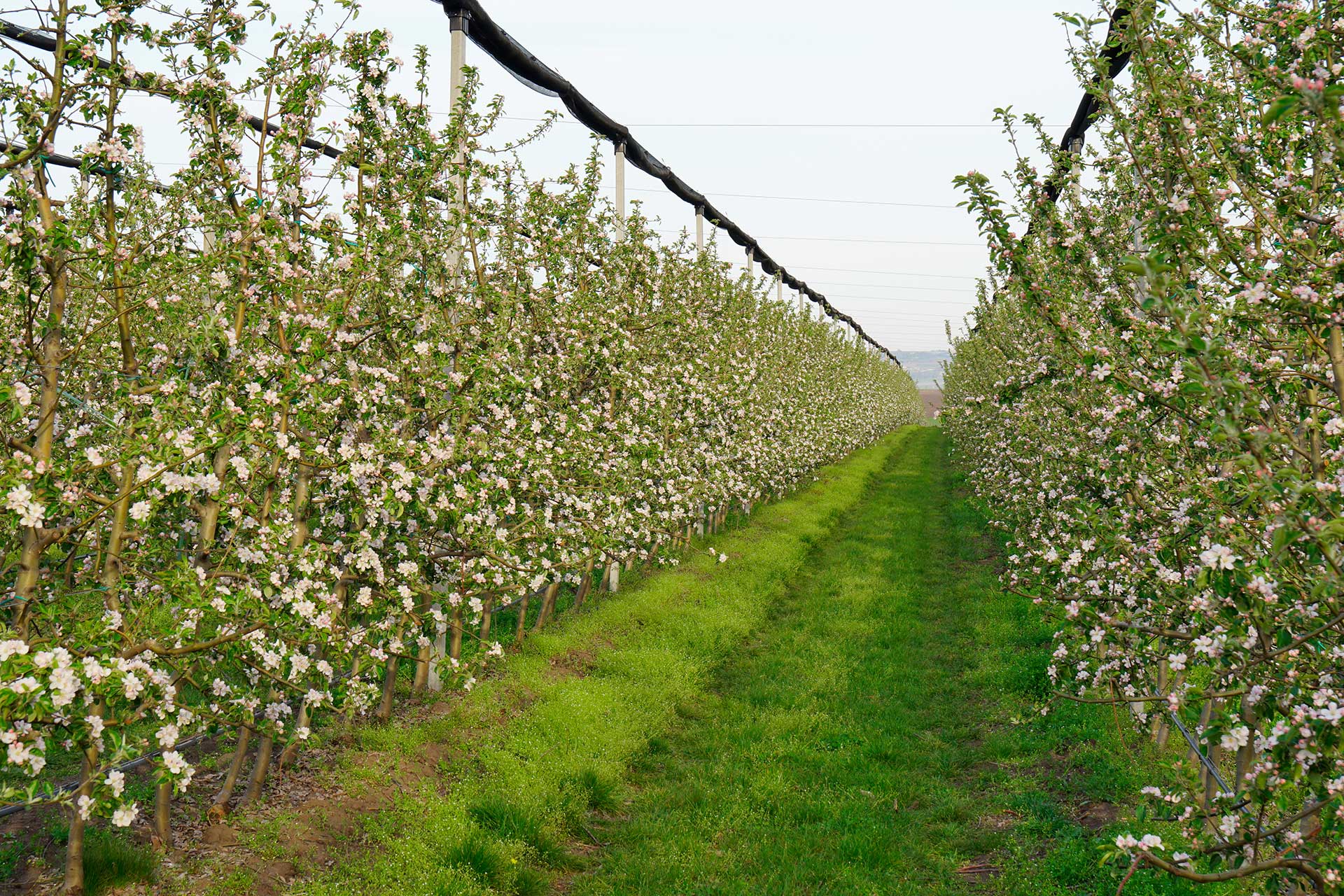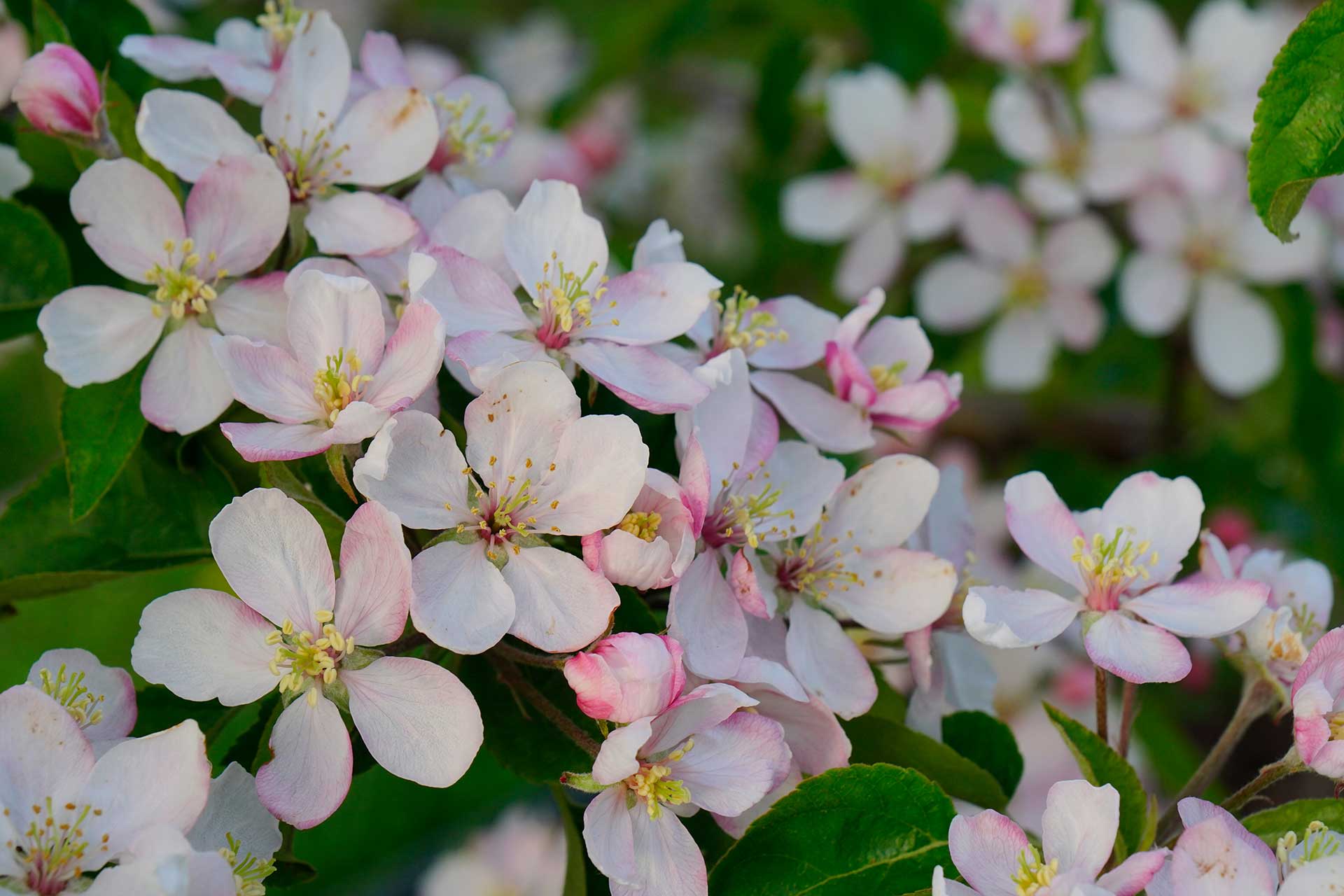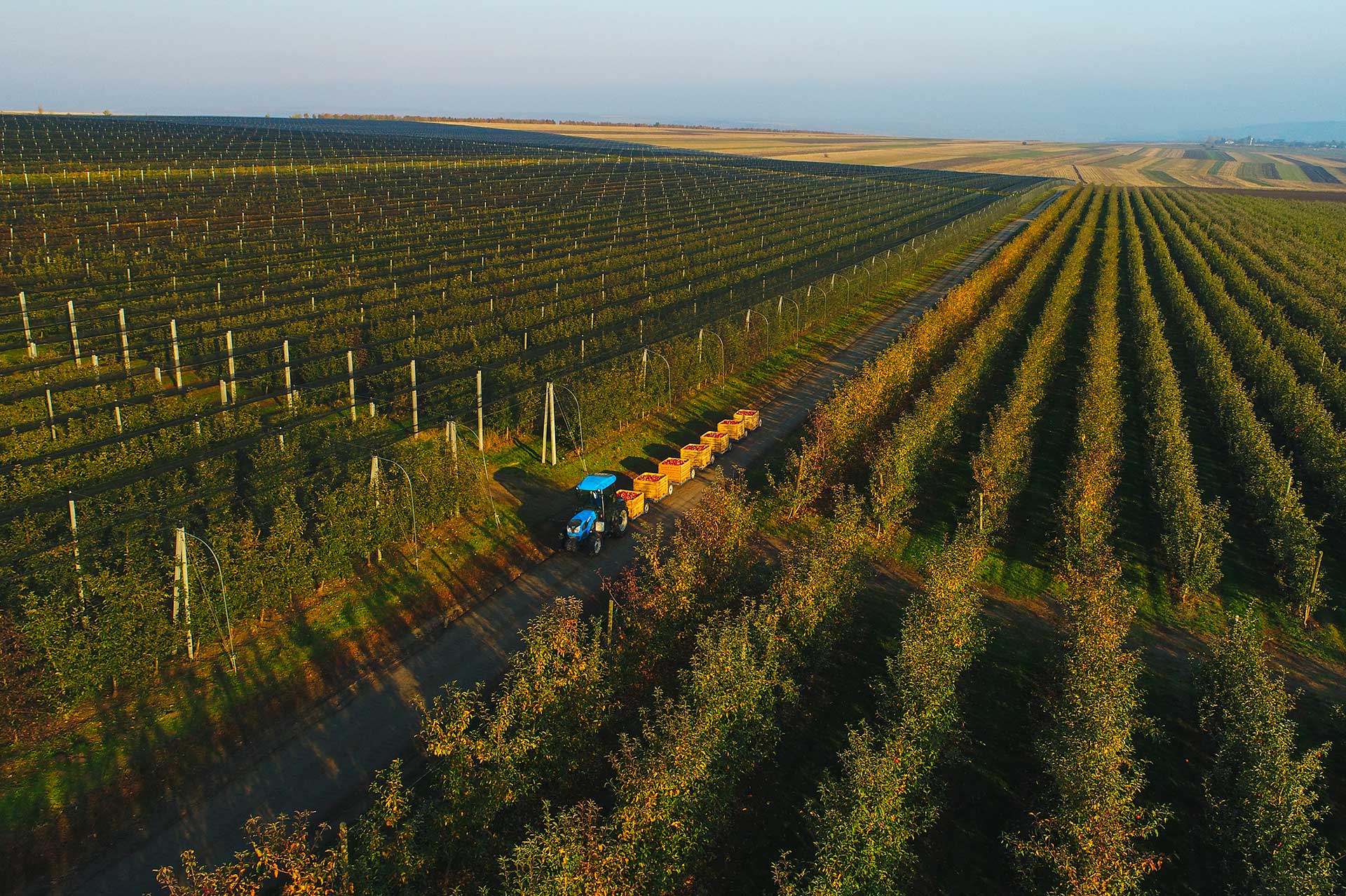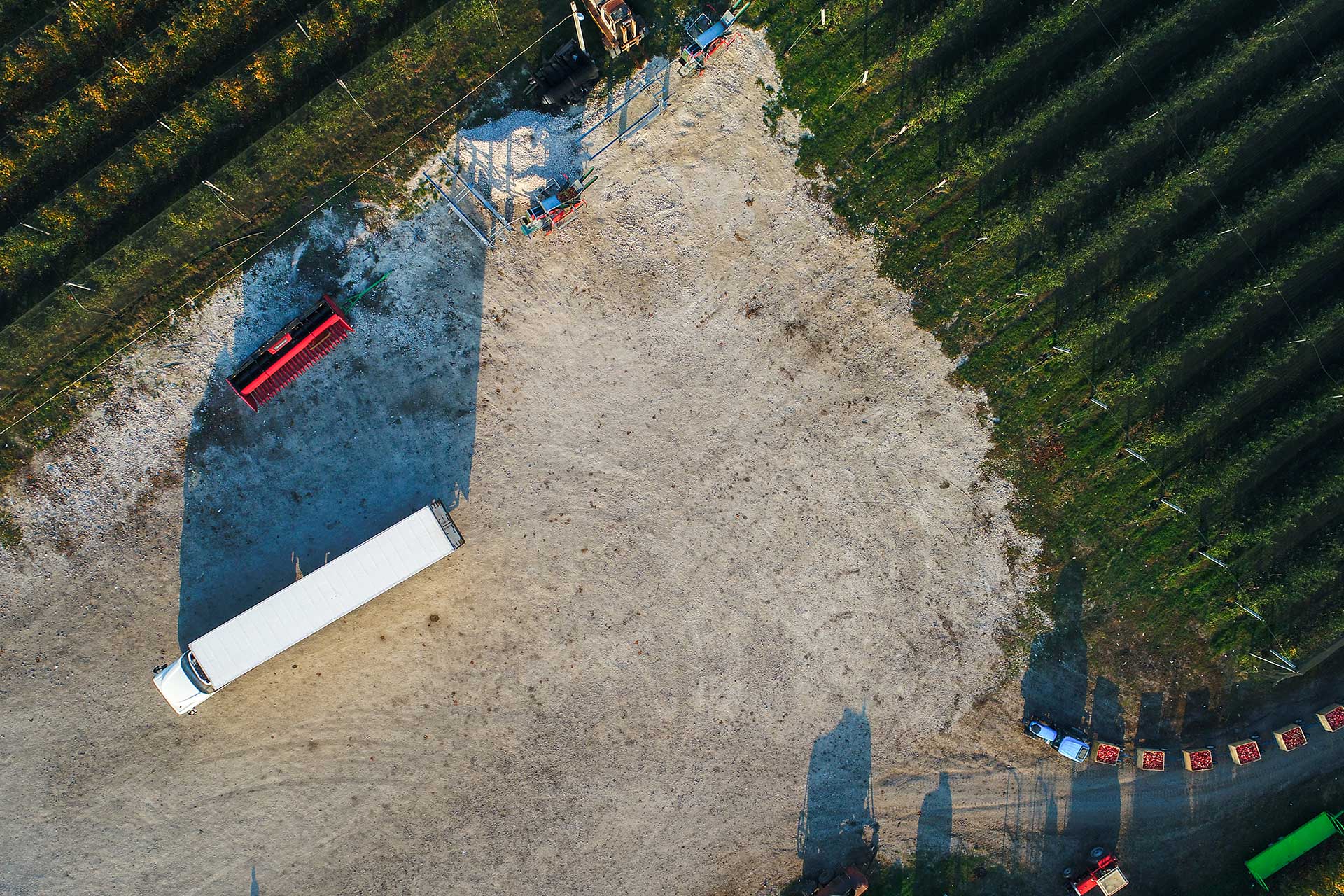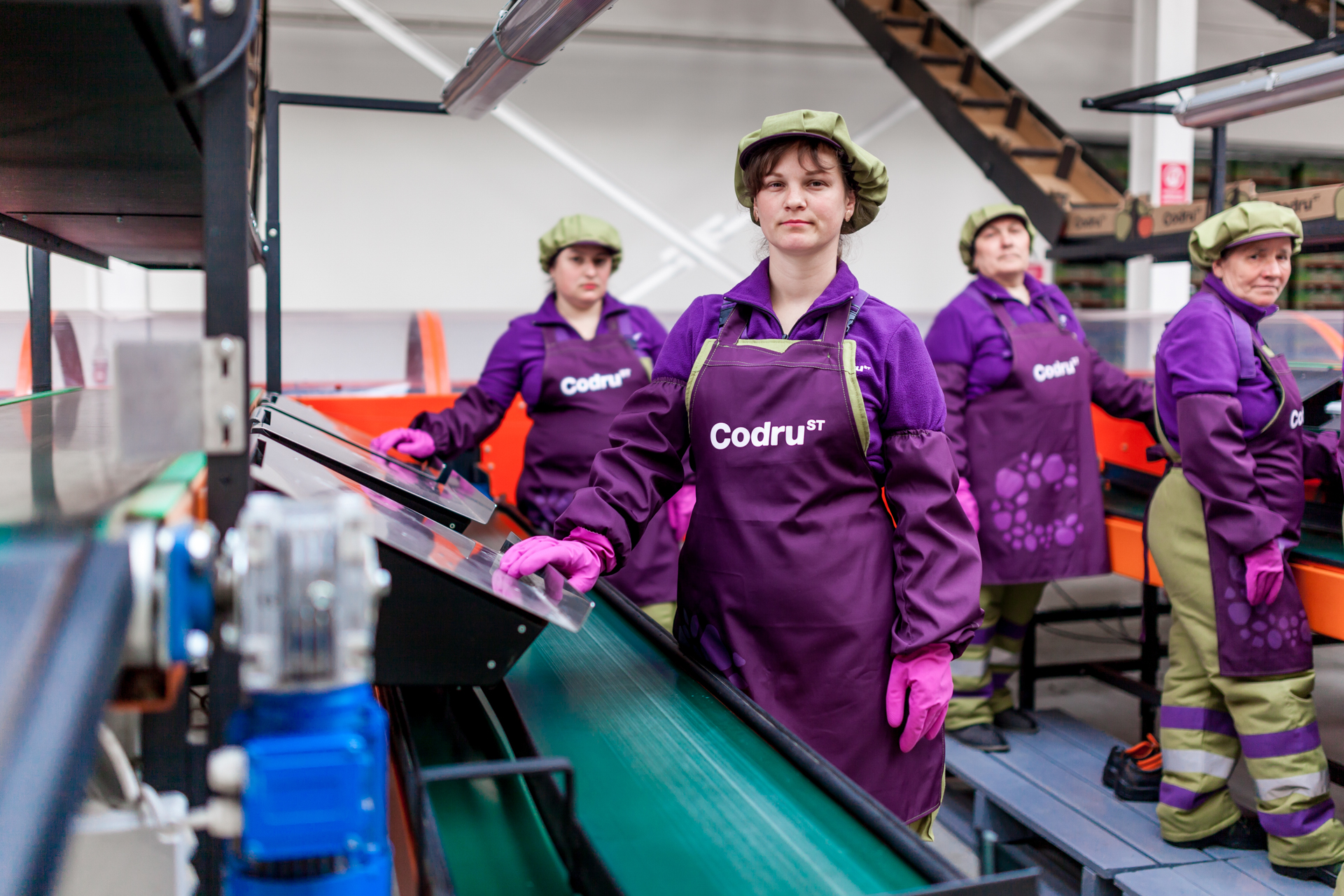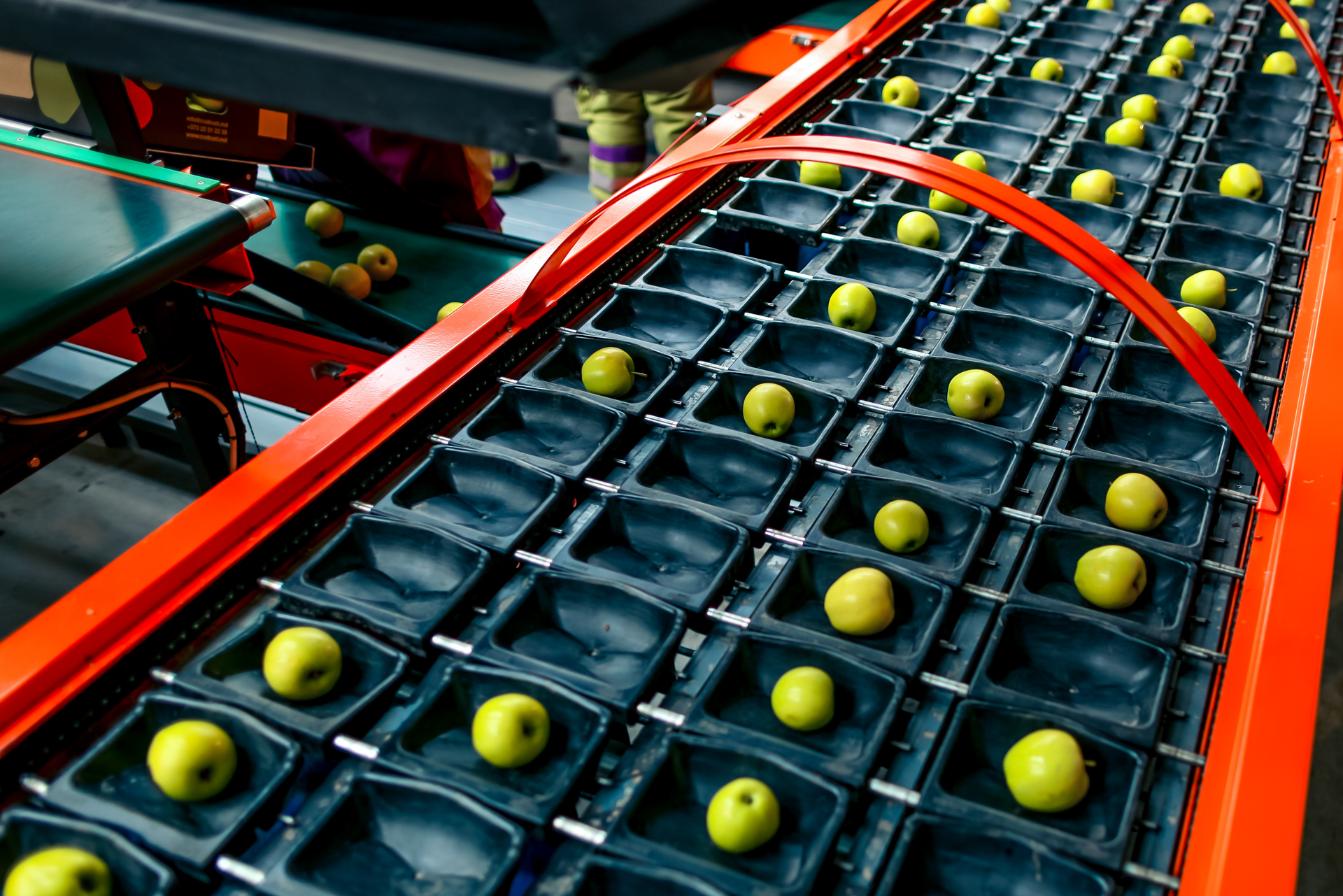An intensive system of fruits growing suggests
the use of advanced technologies based on empirical data of the production factors analysis:
- soil;
- water;
- temperatures;
- annual precipitation;
- location of land plots and rows in plots.
Some characteristics of the intensive systems of crops growing:
- High density of trees on a certain surface.
- Centralized and automated fermentation and watering systems, depending on the program of fertilizing trees and depending on climatic conditions (precipitation, heat, etc.).
- Anti-hail protection systems with use of nets above the orchards.
- Tree Cutting and care techniques for maximum yield efficiency and fruit quality.
In recent years, the development of fruit growing in the Republic of Moldova is aimed at replacing extensive orchard systems with intensive and superintensive.
The new type of orchards allows to maximize the yield per hectare and produce fruits of the same size, color, of a high quality standard, which makes the product competitive in any international market.
Codru ST cultivates fruits and table grapes in intensive and super-intensive growing systems, providing uniform fruit to its customers.
The planning, planting and cultivation of perennial plantations in Codru ST are performed under strict adherence to the recommendations of world-renowned experts and under the strict control of agronomic engineers in each orchard. International consultants providing us with their services are agronomists from agricultural institutions and enterprises in Italy, Germany, France, the Netherlands, the USA, Moldova, etc.
GlobalG.A.P.
Codru ST was among first enterprises in the Republic of Moldova certified for Good Agricultural Practices recognized worldwide by GlobalG.A.P standards. At the time of first certification, these standards were called EurepG.A.P., which later evolved into GlobalG.A.P
The standard covers:
- Food traceability and safety.
- Environment (including biodiversity).
- Health, safety and welfare of workers.
- Welfare of the fauna.
- Includes Integrated Pest Control, Crop Management, Quality Management Systems and Hazard Analysis and Critical Control Points (HACCP).

